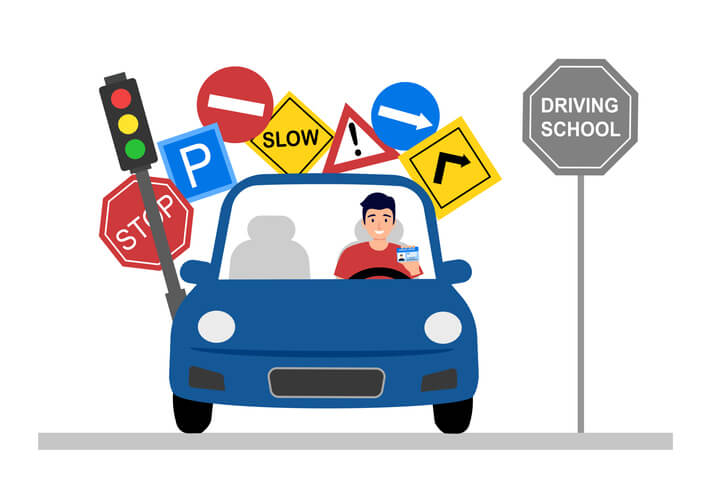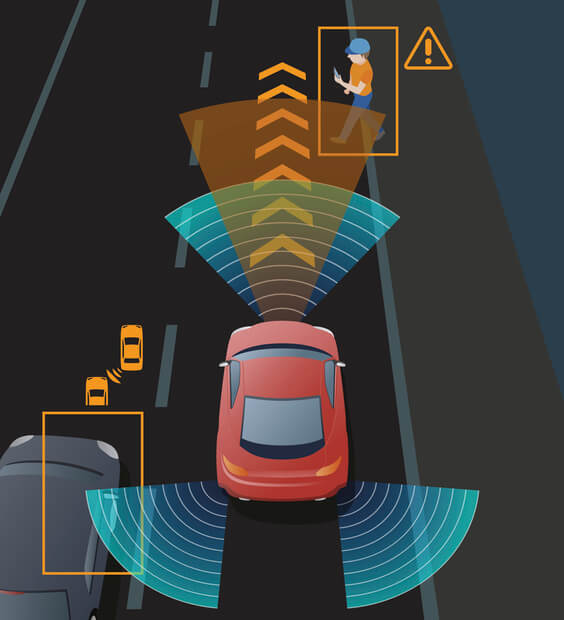Congratulations on reaching the exciting milestone of getting your driver’s license! Becoming a licensed driver is a rite of passage for many teenagers, and it’s an opportunity to gain independence, freedom, and responsibility. But before you hit the road, you must prepare by taking a driver education course.
In this article, we’ll cover everything you need to know before enrolling in a driver education course, including:
- What is driver education, and why is it important?
- How to choose the correct driver education course and evaluate schools
- What to expect from a driver education course
- Tips for making the most of your driver education experience
- Tips for passing your driving test
- The benefits of taking a driver education course
What is Driver Education, and Why is it Important?
Driver education is a comprehensive course that teaches you the skills, knowledge, and attitudes you need to become a safe, responsible, and confident driver. The course usually consists of classroom instruction, online learning, and in-car training. Driver education is mandatory in many states and is designed to help reduce the risk of accidents, injuries, and fatalities among teenage drivers.
This is particularly important as road fatalities remain a leading cause of death for teenage drivers, especially during the transition from temporary driving permits to driver’s licenses. The skills you will build through driver education schools could very well save your life.
The goal of driver education is to equip you with the skills and knowledge you need to handle various driving scenarios, understand traffic laws and signs, and develop safe and defensive driving habits.. By taking a driver education course, you’ll learn about the following:
- Basic vehicle control
- Hazard recognition and avoidance
- Speed management
- Sharing the road with other drivers and pedestrians
- Night driving
- Alcohol and drug impairment
- Distracted driving
- Defensive driving
It’s important to note that driver education is not just about passing your driving test but also about developing lifelong skills that will keep you and everyone else on the road safe.
How to Choose the Right Driver Education Course
With so many driver education courses available, it can be overwhelming to choose the right one. Different schools offer different curriculum tailored for different learning styles and student needs. Here are some key factors to consider when selecting a driver education course and the schools that offer them:
- State requirements: Ensure the course meets the minimum standards set by your state’s Department of Motor Vehicles (DMV). Note that different state’s handle licenses through different agencies. Texas issues licenses through the Texas Department of Public Safety (TDPS) and Utah through its Division of Motor Vehicles for example. Some states require a certain number of hours of classroom and behind-the-wheel instruction, while others have specific requirements for online learning.
- Cost: Driver education courses can range from a few hundred to over a thousand dollars. Compare prices and options to find a class that fits your budget.
- Course format: Schools offer driver education courses in a traditional classrooms, online, or in a combination of both. Consider your learning style and schedule when choosing a course format.
- Reputation: Research the reputation of the driver education course and instructor. Look for reviews and feedback from past students and check the instructor’s credentials and experience.
- Behind-the-wheel training: Behind-the-wheel training is a crucial part of driver education. The best way to become a safer driver is through supervised practice and training.
What to Expect from a Driver Education Course
Once you’ve chosen the right driver education course, it’s time to start preparing for the road ahead. Here’s what you can expect from your driver education experience:
- Classroom instruction: The classroom portion of the driver education course will cover the basics of safe driving, including rules of the road, traffic laws, and defensive driving techniques. You’ll have the opportunity to ask questions, participate in discussions, and take quizzes to test your knowledge.
- Online learning: Many driver education courses include an online component that allows you to complete coursework and study at your own pace. You’ll also have access to interactive learning tools and resources to help you better understand the material.
- Behind-the-wheel training: The behind-the-wheel training is where you’ll put the knowledge and skills you’ve learned in the classroom into practice. You’ll have the opportunity to drive a vehicle with a licensed instructor by your side, who will guide you and help you improve your driving skills.
- Testing: At the end of any regular driver education course, you’ll take written and driving tests to assess your knowledge and driving skills. The written test will cover traffic laws, road signs, and safe driving practices. The driving test will evaluate your ability to handle various driving scenarios, control the vehicle, and follow traffic laws.
- Temporary license or learner’s permit: Driving schools will provide you the means to attain your learner’s permit or temporary license. This is what you’ll need to use while learning to drive.
Tips for Getting the Most Out of Your Driver Education Course
Getting the most out of your driver education course can make a big difference in your driving experience and ability. Here are some tips for getting the most out of your course:
- Be an active learner: Engage in the material and ask questions. Participating in class discussions and interactive activities will help you retain the information better and give you a deeper understanding of the topics you’ll be learning.
- Take good notes: Keep a notebook or use a digital device to take notes during the course. Having detailed and accurate notes will provide a reference for later study and review. Think of it like writing letters to your future self with all of the answers!
- Practice outside of class: Driving schools are good at what they do, but it’s always a good idea to reinforce what you’ve learned in class by practicing what you’ve learned. This could include practicing driving with a parent or guardian or taking additional practice tests online.
- Focus on your weaknesses: Pay attention to areas where you struggle and focus on improving those skills. Challenging skills to master could be anything from parallel parking to merging onto a highway.
- Stay organized: Keep track of important deadlines, such as testing dates, and stay on top of your course materials and resources. Regular review of all course materials, dates, and your own progress will help you excel.
Tips for Passing Your Driving Test
The driving test can be nerve-wracking, but you can ace it with some preparation and practice. Avoid some of the obvious ways to fail, and apply these tips for passing your driving test:
- Study the material: It is essential that you thoroughly understand the material covered in the driver education course, including traffic laws, road signs, and safe driving practices. Review your notes, study online resources, and take practice tests to reinforce your knowledge.
- Practice, practice, practice: Behind-the-wheel training is essential for preparing for your driving test. Take advantage of the opportunity to practice driving with a licensed instructor, and make sure you get plenty of experience driving in different conditions and scenarios, from weather to light conditions. You never know what test day might bring!
- Get plenty of rest: Make sure you’re well-rested and alert on the day of your driving test. You need to concentrate and react quickly to changing road conditions.
- Arrive early: Plan to arrive at the DMV early for your driving test. Make sure to leave yourself plenty of time to calm your nerves and mentally prepare for the test.
- Follow the rules of the road: During the driving test, follow all the rules of the road, including traffic laws, speed limits, and right-of-way rules.
The Benefits of Driver Education
A driver education course has many benefits beyond just preparing you for your driving test. Here are some of what you can look forward to experiencing:
- Improved driving skills: Driver education courses help you develop safe, responsible, and confident driving skills. You’ll learn how to handle various driving scenarios, recognize hazards, and develop good driving habits.
- Lower insurance rates: Many insurance companies offer discounts for drivers who have completed a driver education course. The course shows insurance companies that you’re a responsible and safe driver, which can result in lower insurance rates.
- Enhanced knowledge of traffic laws: By taking a driver education course, you’ll better understand traffic laws and regulations. This knowledge will help you avoid traffic violations and fines and keep you and others safe on the road.
- Better prepared for the road ahead: Driver education courses prepare you for the road ahead by teaching you the skills, knowledge, and attitudes you need to become a safe, responsible, and confident driver.
In conclusion, taking a driver education course isn’t just a hallowed right of passage; it’s a critical step in getting your driver’s license. Long before you get your license from your local motor vehicle division or receive it in the mail, you should be focusing on becoming the safest possible driver. How you approach this challenge is ultimately up to you, but the first step meeting it is knowing what to expect.
Staying safe behind-the-wheel is a lifelong pursuit. With the right preparation and practice, you’ll build foundation of safe driving skills to keep you safe for life and be ready to hit the road to start your journey as a licensed driver.
Liam Hoch researches and writes about safe driving for DriverZ.
Having been a passenger in multiple near-catastrophic vehicle collisions, Liam knows first-hand the dangers of distracted, reckless, and unsafe driving.
Passionate about our core principles of helping to make safer drivers and, ultimately, saving lives, Liam stays at the forefront of driving safety innovation and research.


















